Best trail mix: nutritious fuel for your hikes and backcountry expeditions
Experienced backpackers often have their own personal best trail mix to fuel their adventures with bagfuls of peanuts and raisins laced with chocolate chips
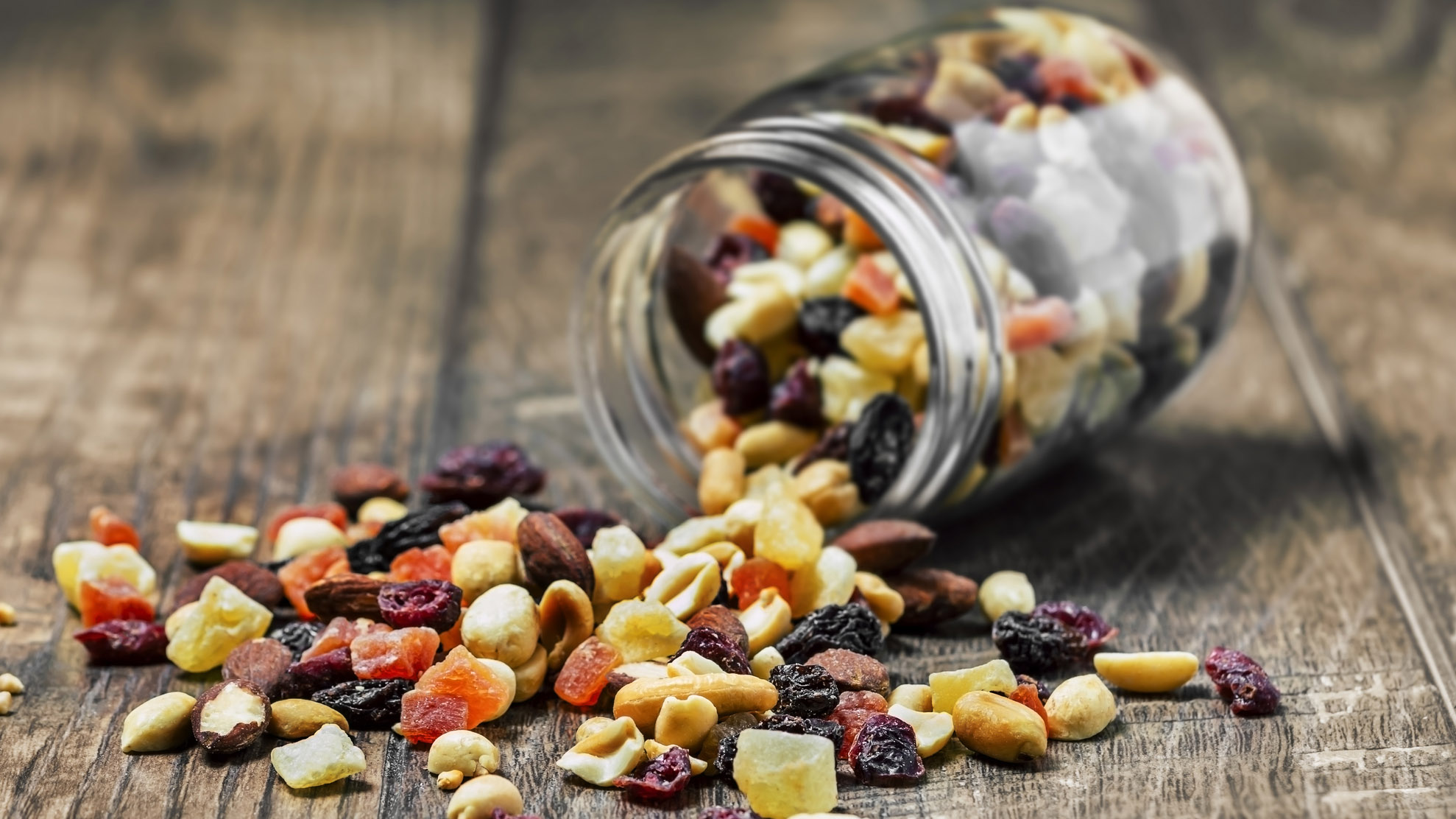
Once you’ve discovered your best trail mix recipe, you won’t look back. Perhaps you know it as ‘gorp’, ‘scroggin’ or simply ‘trail mix’, but since the days that we first started heading into the hills for leisure, backpackers have been creating nutritious cocktails of nuts, seeds and dried fruit to fuel their adventures.
The best trail mix truly is one of the most practical ways of bringing large amounts of potential energy along with you on a hike. It is a relatively small addition to the load in your hiking backpack, doesn’t require careful storage, doesn’t go off and is relatively cheap. It is fuss-free perfection that allows you to get on with the stuff that really matters out there.
Even though it can often look like something you’d put in your garden’s bird feeder, the best trail mix is also delicious, often enhanced by little personal touches, such as chocolate chunks. People have been creating their own trail mix since the early 1900s, when the principle behind it first appeared in camping guides. However, we don’t doubt that primal foragers would have tucked a few nuts, seeds and berries in their mammoth skin kilts back in the day. These days, it’s just a case of popping it in our daypack and heading for the trail.
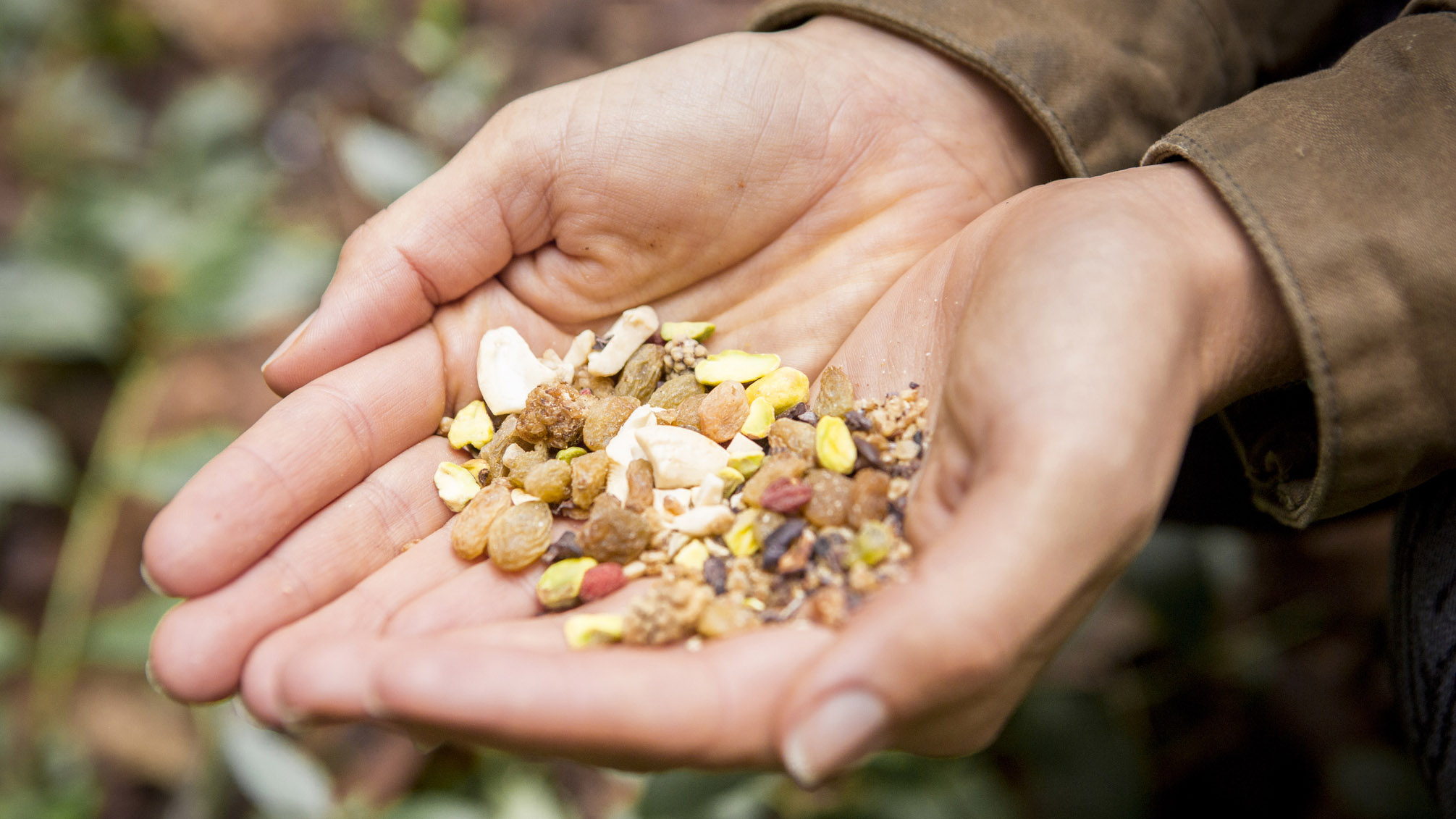
Jack Kerouac, in his 1958 book The Dharma Bums, writes about Gary Snyder preparing rations for a climb up California’s Matterhorn Peak. They fill a bag with ‘peanuts and raisins and another bag with dried apricot and dried prunes’, with Kerouac adding, incredulously, that that was all the ‘food for three grown men for 24 hours or more climbing at high altitudes...’ He’d summed up the point of trail mix in three principles: simplest ingredients, maximum energy, least weight. This is what makes it a hiking essential.
Bagged-up commercial trail mix is always available in supermarkets and whole food shops, but the ingredients are easy to source in the same shops, and there’s a lot to be said for DIY-ing your own combination. Not least because there are plenty of variations on the basic and dull recipe as defined by trail mix’s familiar American name, ‘gorp’ – allegedly an acronym for ‘good old raisins and peanuts’. Being able to select a wider variety and a higher quality of ingredients than just ‘raisins and peanuts’, and adjusting the taste with unlikely or even eccentric choices, can only improve what is already one of the best go-to snacks for on-the-go situations. It is also ideal as a small, fuss-free camping meal, particularly if you're on an expedition.
Best trail mix: the basic recipe
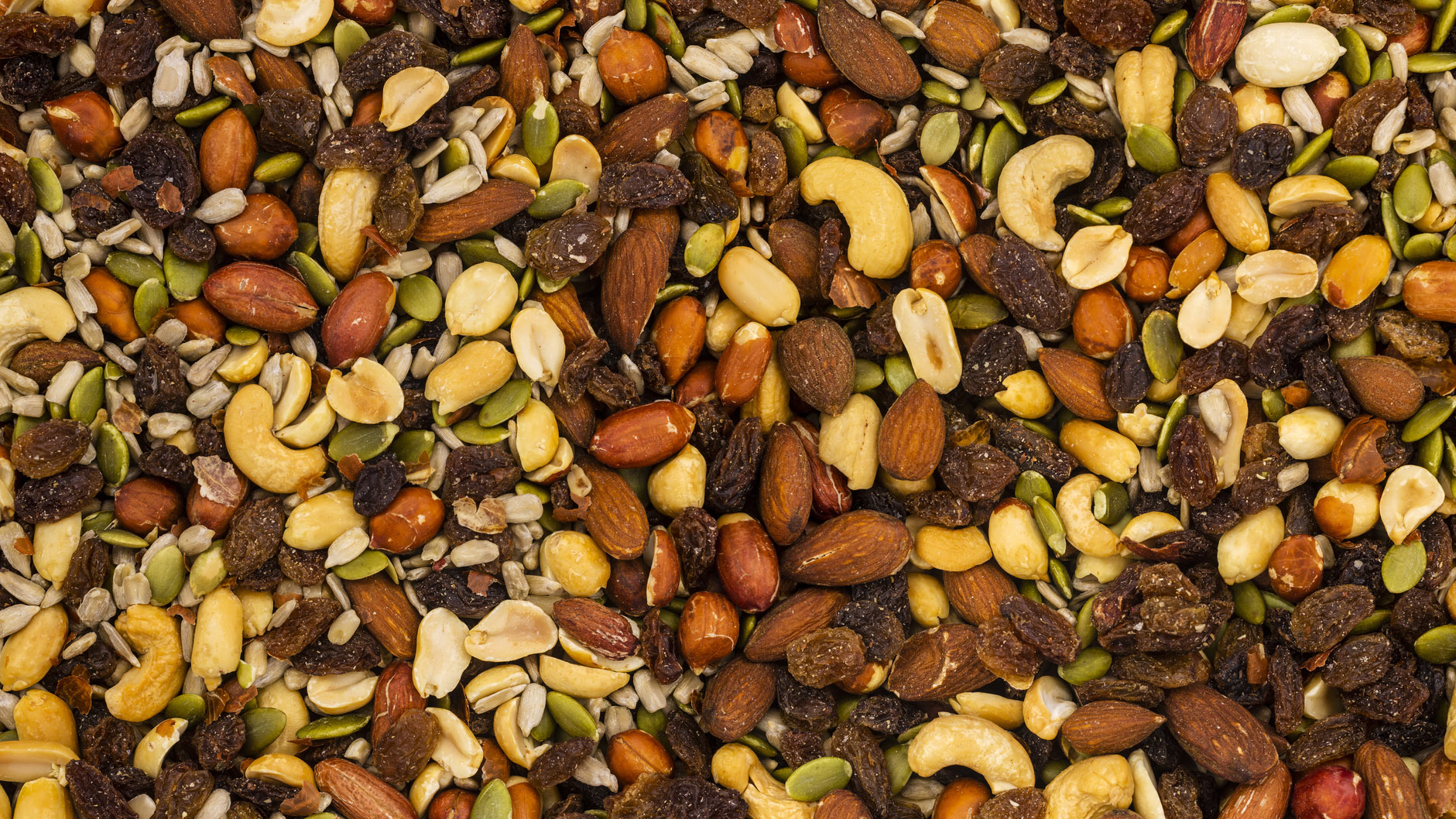
Classic trail mix combines nuts, seeds and dried fruits. That’s it. Though you can make a better quality and healthier trail mix by carefully sourcing ingredients. For example avoid the cheap banana chips that are often used to bulk out cheaper commercial mixes, as they’re often coated in refined sugars and fried in oils; you’re better off low-heat drying strips of fresh banana then chopping into small pieces.
Indeed drying apple rings and other fruit can make for a far better and ‘fresher’ trail mix. On the move, store your trail mix in a reusable Zip-loc bag or a dry bag and then stuff it into your pack; you can take out small amounts to keep in a smaller bag in a pocket to dip into. On longer hikes it can make sense to bag up each day’s ration separately, so the total amount lasts the whole trip, or perhaps just choose ingredients that make it less ‘moreish’ so there’s little tendency to scoff the whole lot early on. Or just take more.
Advnture Newsletter
All the latest inspiration, tips and guides to help you plan your next Advnture!
Trail mix muesli
Though you’ve probably already come up with the idea of stirring trail mix into oats to make muesli or a better porridge for camp breakfasts there’s a lot to be said for bulking out trail mix with rolled oats for their slow release energy benefits and additional B vitamins and minerals. This approach certainly has its place in a hydration pack if you're tackling the challenge of a long ultra run.
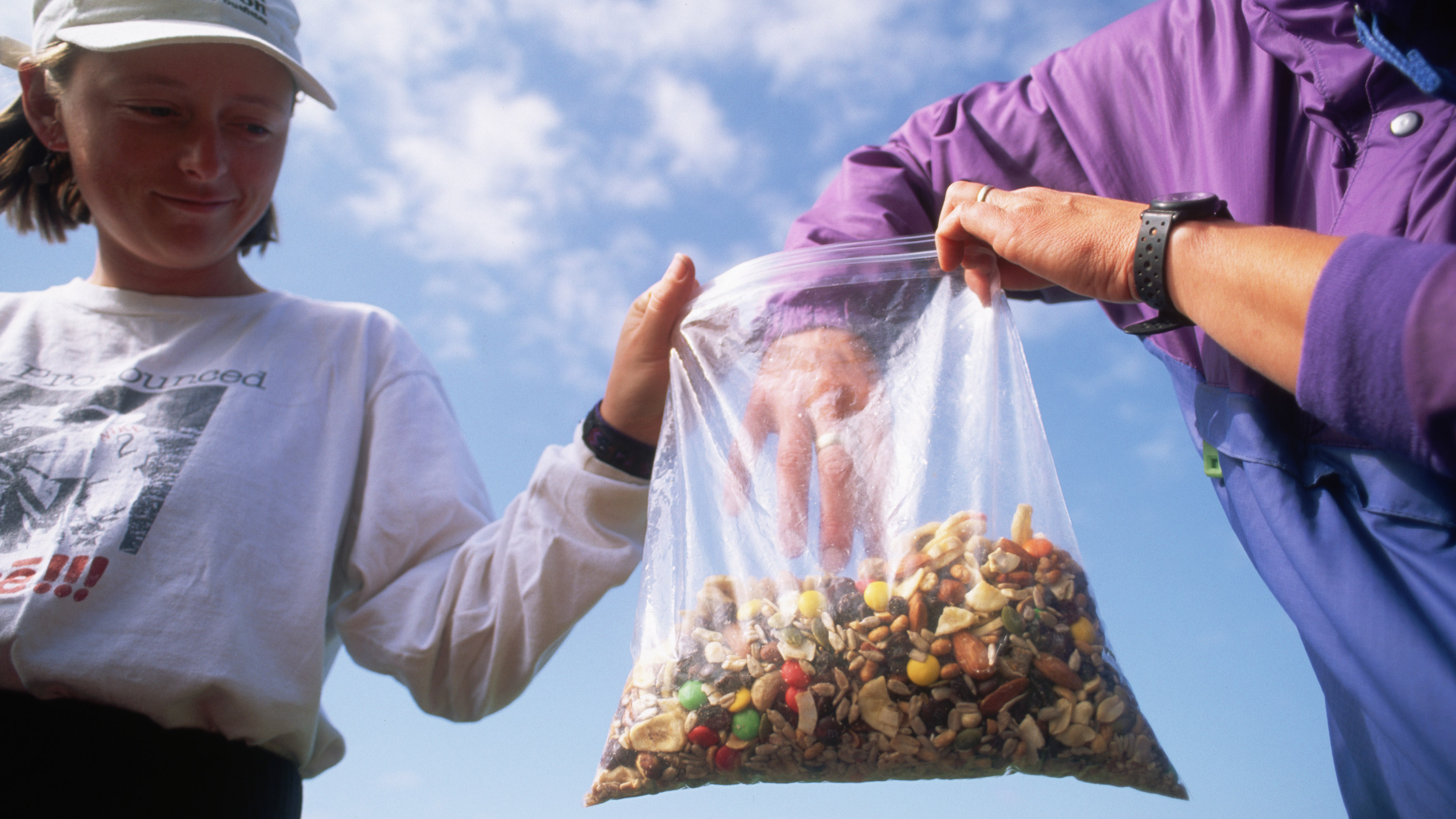
Pimp my mix
It’s tempting to add favourite tastes and flavours to the basic ingredients when making your personal best trail mix. Sometimes that’s a good idea, sometimes less so. Throwing in chocolate chips, popcorn or whatever means you’re moving away from the ‘trail’ part of trail mix and towards something closer to...er, ‘shopping mall’ mix. Chocolate melts in warm conditions and popcorn softens in the kind of outdoors situations where trail mix should be hard and lean – but if either gives you a lift when your best softshell jacket is soaked, you're cold and you need a lift, then go for it. Covered chocolates, like M&Ms or Smarties, can help avoid the worst of the melt problem.
On the other hand, adding in chopped dates makes a lot of sense. High in protein, with natural sugars, and a range of vitamins that are far better eaten in date rather than pill form, they’re my number one addition to trail mix – indeed if I only had the chance to stock up on a single foodstuff to last me through several days, dates would be my overall choice.
Some swear by the benefits of cacao nibs (crushed cocoa beans) for their anti-oxidant and anti-inflammatory properties, and for their theobromine content, which can perk one up like caffeine – perhaps you can leave the hiking flask at home. Others add goji berries for their large amounts of vitamins A and C and alleged immune-system boosting effect, or chunks of crystallised ginger, which can help with nausea and stomach problems – a common feature of mild altitude sickness.
Chia seeds became a bit of a phenomena when Chris McDougall, in Born To Run, suggested they helped fuel Mexico’s Tarahumara through incredible feats of endurance and distance running. For a tiny seed they have big pluses, particularly their high (by plant standards) protein and calcium levels. For some people, the drawback to adding dry chia seeds to trail mix is the way they absorb moisture as you’re chewing them, becoming a gloopy slime (adding what the more innovative of celebrity chefs might call a ‘unique mouthfeel’). Whether it makes it into your best trail mix or not, is up to you.
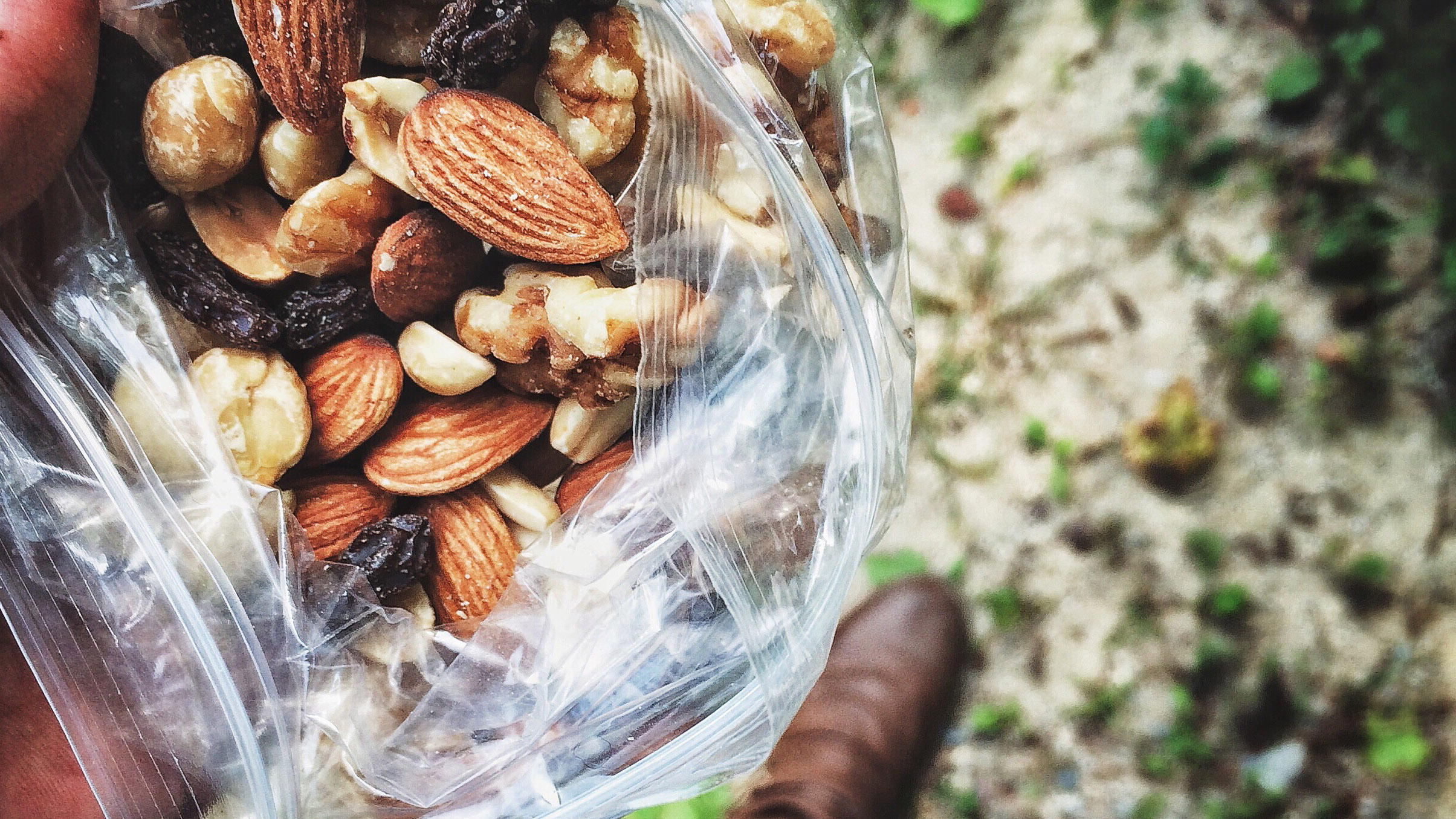
Trail mix flapjacks
Finally, campfire flapjacks have become a whole new thing with trail mix – the fruitier the better – added to the basic fine oats, flour and honey recipe (a bit of oil and a pinch of salt, too, if you want to get fancy). Cook them on top of a heated rock for full flavour, sit back in your camping chair and enjoy. Beware the temptation of using up all your gorp allowance in one flapjack binge. The best trail mix is for the trail, after all.
Commercial trail mixes
Numerous companies make premade trail mix, including Wild Roots , Acti-snack, Planters, Wyldsson, All Good Provisions, Navitas and Enjoy Life, who do an allergy friendly no-nut trail mix.
Bags of nuts (almonds, peanuts, Brazil nuts, hazelnuts, cashew nuts and pecan nuts) can be bought in most supermarkets and added to bags of fruit and seed mix and other ingredients (flax, pumpkin and chia seed mix) to make your own combinations.
Independent health and whole food shops are likely to have better – and more expensive – ready-mixed bags than supermarkets but, then, they will also stock the individual ingredients you need to tailor-make your own trail mix, and that’s always going to be the option for creating the best trail mix possible.
After a wild childhood in west Cork, Jasper Winn began embarking on long cycles, walks, horse journeys and kayak trips across five continents – adventures he’s decanted into books, magazine articles, radio and television documentaries. Keen on low-tech but good gear, Jasper is an advocate of slow adventures by paddle, pedal, saddle, boot and sail. He has circumnavigated Ireland by kayak and cycled across the Sahara. Twice. Having ridden north-to-south across Algeria he discovered the only way to get back was to turn round and pedal north again.

